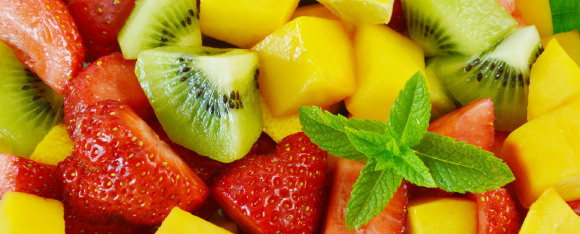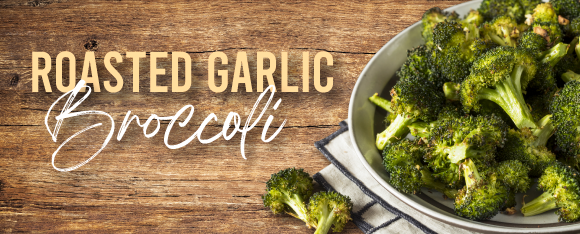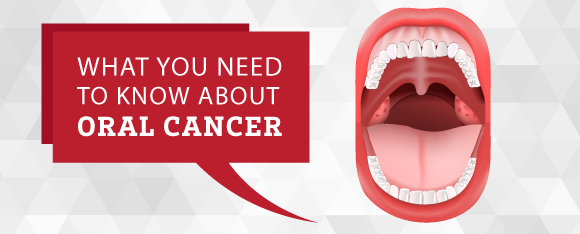

Don’t brush off your dental hygiene
COVID-19 has caused many people to put their oral care routine on the back burner. In fact, almost half of adults who were surveyed this year reported delaying dental care.[1] And nearly 75% of those folks postponed their regular preventive checkups. It’s no surprise that dentists have seen a nearly 30% rise in patients with cavities and severe gum disease due to the pandemic.[2]
Now that the majority of dentist’s offices have safely reopened, hopefully you’ve scheduled the routine exam or other services you need. But it’s also important to stick to a solid oral care routine each day. Valerie Fleming, United Concordia oral wellness consultant and licensed dental hygienist, offers expert advice on how to step things up at home.
Spot plaque with disclosing tablets
These fruity-flavored tablets are made with harmless food coloring, which turns plaque shades of red or blue. Simply chew one up, mix it with your saliva and swish it over your teeth. The color sticks to plaque to show areas you missed while brushing.
“The darker the color, the longer the plaque has been on your teeth,” said Fleming. “If it doesn’t come off easily when you brush (and it should!), it’s probably hardened plaque that your dentist will need to remove.”
Check your mouth with a mirror
You can actually buy disposable dental exam mouth mirrors, similar to what your dentist uses. Use them to look at the tongue-sides of your teeth, which can get stained from coffee and tea. You can also inspect the condition of fillings and look for cracks, chips or other tooth issues.
Having a mouth mirror is helpful for doing an oral cancer self-exam at home, too. Though dentists perform oral cancer screenings during routine exams, the Oral Cancer Foundation recommends checking yourself between visits on monthly basis.[3]
Prevent cavities with xylitol
Pronounced “zy-la-tall”, xylitol is a sugar substitute made from birch wood. It’s used in sugar-free gum, sugar-free candies and even oral moisturizers that help with dry mouth.
How does xylitol prevent cavities? Basically, bad bacteria can lead to plaque, which can cause gum disease and tooth decay. To live, this bacteria feeds on sugar. So when you replace sugar with xylitol, the bad bacteria starves to death.[4] “Try chewing sugar-free gum or sucking on sugar-free mints during the day,” said Fleming. “It also stimulates healthy saliva that helps to rinse your teeth clean.”
What you need to know about oral cancer
Oral cancer refers to any cancer that starts in the oral cavity, or mouth. Oral cancer can affect the lips, cheeks, tongue, roof and floor of the mouth, gums and teeth.[5]
While anyone can develop oral cancer, men are twice as likely as women to develop the disease. It most often occurs in people over 40.[6]
Our infographic can help you learn more about oral cancer, including risk factors, symptoms to watch for, and how to help prevent the disease. Share it with friends and family to help spread awareness and education.

Your dentist could save your life
Did you know that dentists perform oral cancer screenings as part of routine preventive exams? That’s why your dentist is your best ally to help detect oral cancer early.
Almost 90% of people survive oral cancer when it’s caught early.[7] Unfortunately, most cases are diagnosed in the later stages after the cancer has spread. That’s why it’s important to take advantage of your covered preventive checkups.
But if you’re between exams, it’s easy to do a simple self-exam at home. Make sure to discuss any concerns with your dentist, especially if they last longer than two weeks.
Oral cancer symptoms include:[5]
- Mouth or throat sore that won’t heal
- Lump or mass in your cheek or neck
- White or red patches on the tonsils, mouth, tongue or gums
- Tingling or numbness in the mouth or tongue
- Loosening or pain around your teeth
- Consistent bad breath, weight loss or voice changes

4 oral conditions linked to stress
Don’t be surprised if your dentist asks what’s been on your mind lately. Dentists can identify the oral symptoms of stress while you’re in the exam chair. Stress may weaken your immune system, which can put you at risk for some oral health issues, such as:
Cold sores and canker sores – Canker sores form inside your cheeks, on your gums and under the tongue, while cold sores form outside the mouth.
Gum disease – Caused by the bacteria in plaque, gum disease symptoms may include red, swollen, sore and bleeding gums.[8]
Cavities – Stress eating candy and chocolate can sugarcoat your teeth – and sugar feeds cavity-causing bacteria.
Oral cancer – People who smoke or drink may increase these activities to cope with stress. These are risk factors for oral cancer.
It’s important to find ways to manage stress and stay healthy. Try relaxing with a massage, hot bath, deep breathing or simply picturing yourself in a calming spot. There are many ways to release tension, so find the activity that works best for you.
Get tips to control stress at work

Bleeding gums? You may have low vitamin C
Tender, bleeding gums can be a sign of gingivitis. But if your dentist has ruled out gum disease, the bleeding could be caused by low levels of vitamin C.
A recent study shows that bleeding gums, and also bleeding in the eyes, is associated with low vitamin C levels in the bloodstream.[9] Researchers found that by simply increasing your daily intake of vitamin C, you can reverse bleeding issues.
According to the Mayo Clinic, men need 90 milligrams of vitamin C per day and women need 75 milligrams.[10] Sure, you can get your daily dose by taking tablets, but supplements may not be as beneficial as the natural vitamin C found in food.[11] Here are the top vitamin C-rich fruits and veggies to work into your diet.[11]
Top vitamin C-rich foods [10]
Red bell pepper – 190 mg
Kiwi – 137.2 mg
Broccoli – 132 mg
Cauliflower – 127.7 mg
Mango – 122.3 mg
Green bell pepper – 120 mg
Chili peppers – 107.8 mg
Papaya – 88.3 mg
Strawberries – 84.7 mg
Kale – 80.4 mg
Pineapple – 78.9 mg
Brussels sprouts – 74.8 mg

Roasted Garlic Broccoli
Whether steamed, sautéed or roasted, broccoli is deliciously nutritious. Roasting veggies in the oven caramelizes their natural sugars, plus creates crispy edges. This savory side dish is perfect served alongside grilled salmon or rotisserie chicken.
Serves 4
Ingredients:
1½ lbs. broccoli
2 garlic cloves, minced
1½ tsp. olive oil
½ tsp. kosher salt
¼ tsp. black pepper
Directions:
Preheat oven to 400°. Toss broccoli with olive oil, garlic, salt and pepper. Spread the broccoli out on a baking sheet. Make sure the pieces are in one layer. Roast for 20-25 minutes until just browned.
Nutrition per 1 cup serving
75 calories | 3g total fat | 0mg cholesterol | 351mg sodium | 12g carbs | 5g dietary fiber | 3g sugars | 5g protein
Brought to you by Slender Kitchen

Calling all tree-huggers
Nothing announces the coming of spring as much as little green buds on trees. But trees are more than a pretty seasonal sign—they are essential to life. They help clean our air and drinking water.[12] Research has shown that exposure to trees can boost your immune system, lower blood pressure and reduce stress.[13] Being in nature can even speed up recovery from surgery or illness![13]
As the weather starts to warm, make sure to get outside. Take a stroll in a nearby park, make a day trip to a national forest or do Pilates on your back patio. Even sitting in the sun for 30 minutes can make a difference.
These activities can also help your oral health. Walks can curb sugar cravings[14], and a study found that people who exercised frequently had lower rates of severe gum disease.[15] Vitamin D is also important for strong teeth and bones.
Save trees, not stacks of paper
If you gathered all the trees lost to deforestation every minute, they’d fill about 36 football fields.[16] Are you shocked? We are, too. That’s why you have the option to receive paperless explanation of benefits (EOBs).
Not only will opting in for paperless EOBs reduce waste and save paper, but you’ll help us plant 50,000 trees with the Arbor Day Foundation. Trees will be planted in forests and communities in Texas, Georgia, Delaware, West Virginia and Pennsylvania.
These new saplings will help protect endangered animals, contribute to two national pine restoration projects, lower energy costs in urban neighborhoods, revive a damaged ecosystem and more!
[1] Characteristics of US Adults Delaying Dental Care Due to the COVID-19 Pandemic; ncbi.nlm.nih.gov; January 2021.
[2] HPI Poll: Dentists see increase in patients’ stress-related oral health conditions; ada.org, September 2020.
[3] Information-Support-Advocacy-Research…and Hope; oralcancerfoundation.org; 2021.
[4] Xylitol: Everything You Need to Know; healthline.com; 2005-2021.
[5] Oral Cancer; Mouthhealthy.org; 2020.
[6] Oral Cancer; National Institute of Dental and Craniofacial Research; September 2016.
[7] The role of dental and medical professionals; The Oral Cancer Foundation; January 2017.
[8] Gum Disease; Mouthhealthy.org; 2020.
[9] Bleeding tendency and ascorbic acid requirements: systematic review and meta-analysis of clinical trials; academic.oup.com; February 2021.
[10] 12 Foods with More Vitamin C than Oranges; health.com; January 27, 2020.
[11] Vitamin C; mayoclinic.com; November 17, 2020.
[12] Tree Facts; Arbor Day Foundation. Accessed February 2021.
[13] Immerse Yourself in a Forest for Better Health; New York State Department of Environmental Conservation. Accessed February 2021.
[14] 5 surprising benefits of walking; Harvard Health, October 13, 2020. Accessed February 2021.
[15] ANOTHER REASON TO STAY IN SHAPE: HEALTHY TEETH AND GUMS; American Academy of Periodontology, August 2, 2010. Accessed February 2021.
[16] DEFORESTATION: 11 FACTS YOU NEED TO KNOW; Conservation International. Accessed February 2021.
Stay Connected. Stay Healthy. |

